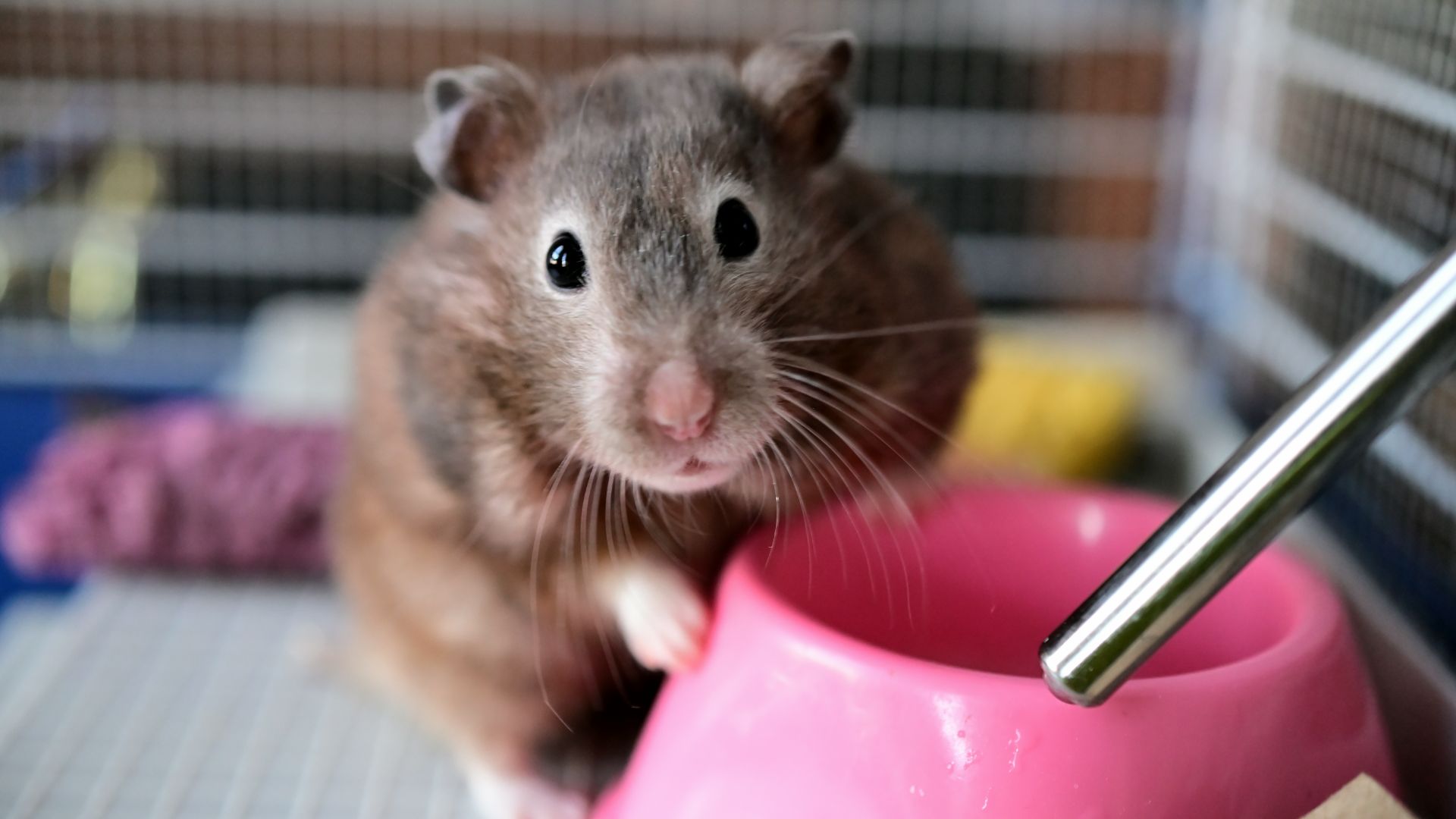
Want to know how to clean a hamster cage? You’re at the right place. Keeping your hamster’s cage clean is key to making sure your hamster stays happy and healthy. You’ll want to have a routine of daily spot cleaning and a more thorough weekly deep clean.
This is especially important when you’ve invested in one of the best hamster cages, as you’ll want to be sure that it stays in good condition for as long as possible.
Vet Dr. Rebecca MacMillan also weighs in on how often to clean a hamster cage, how it should be cleaned, and even what to do with your hamster while you’re cleaning it. All of which are vital to make sure your hamster thrives.
How to clean a hamster cage: Step by step
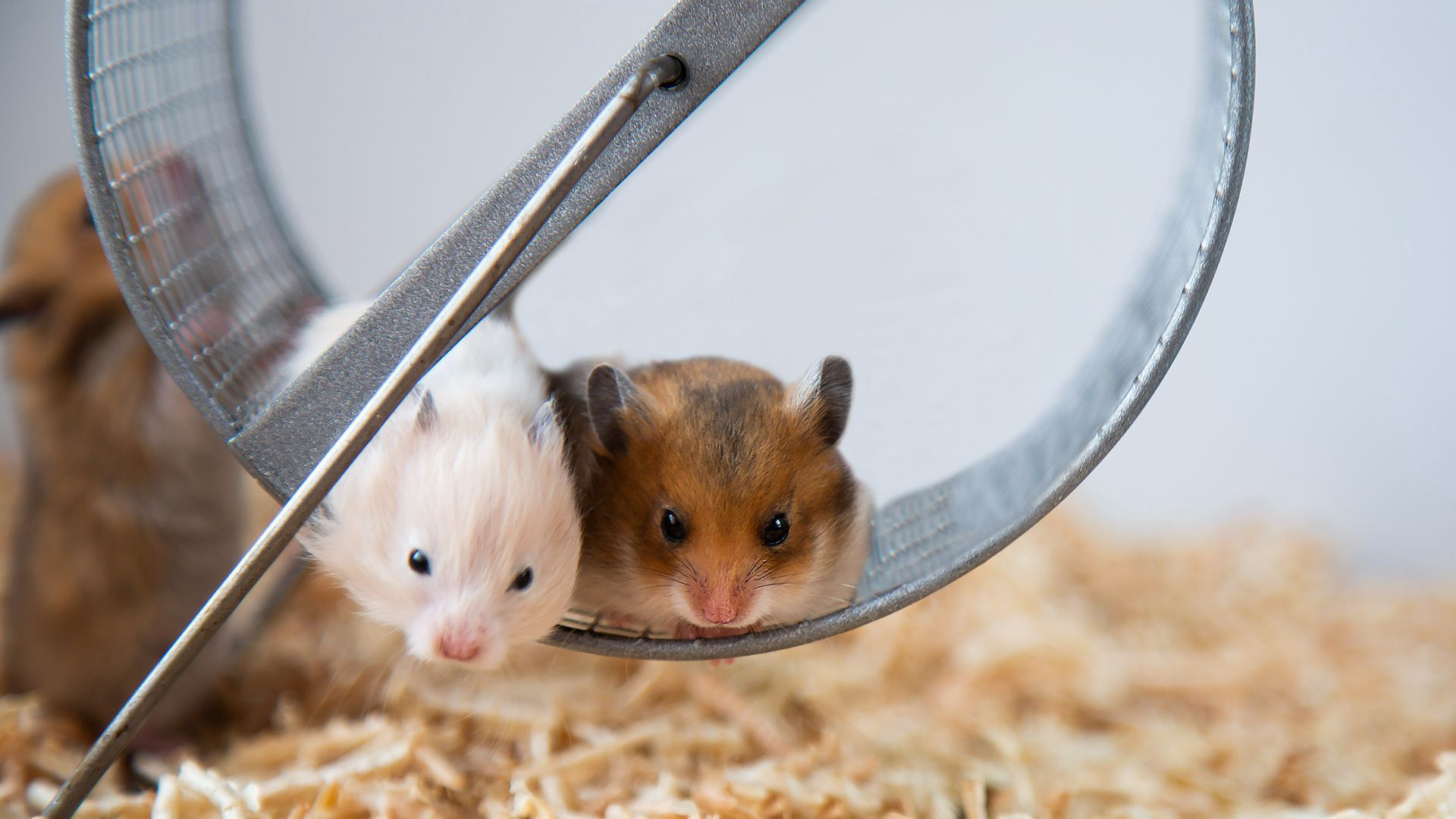
- Make sure your hamster is placed somewhere safe and secure away from the cage.
- Remove any heavily soiled bedding first. Using your pet scoop or a gloved hand, remove the worst of the soiled bedding and place it in a bag or box to be disposed of.
- Remove any non-fixed items in the cage such as food bowls, toys, chew sticks, tubes, and so on.
- Next, empty out the rest of the bedding. If you have a cage that can be taken apart, or the end or top can be removed, an easy way to do this is to simply tip the contents of the cage into a bag or box.
- If your cage doesn't come apart, then you may need to use a scoop or hand to remove the rest of the bedding. If you have an anxious hamster, it can be wise to keep some of the old bedding to mix with the new bedding to help them settle in quicker.
- If you have a cage that can be dismantled, wash each part in warm, soapy water in a basin or a bucket. If your cage can’t be dismantled, use a spray solution (such as a dedicated small pet cleaner or dish soap diluted into warm water) and a cloth, rags, or kitchen towel.
- Rinse off the cage’s components to make sure you remove any residue. If you’re using a spray, use a separate cloth with clean water to achieve the same goal.
- Make sure you give any toys and accessories a similar clean too. Reconstruct the hamster cage if you’ve taken it apart.
- Ensure that the cage and accessories are thoroughly dry before moving on to the next step. Either leave them to air dry or use a clean, dry towel.
- Place fresh sawdust bedding into your hamster’s cage, plus any extra that they use in their sleeping area. Refill your hamster’s food bowl, and refresh the water in their bottle. Place any reserved bedding back into the cage at this point.
- Once the cage is secured again, gently place your hamster back into the cage.
How often do you need to clean a hamster cage?
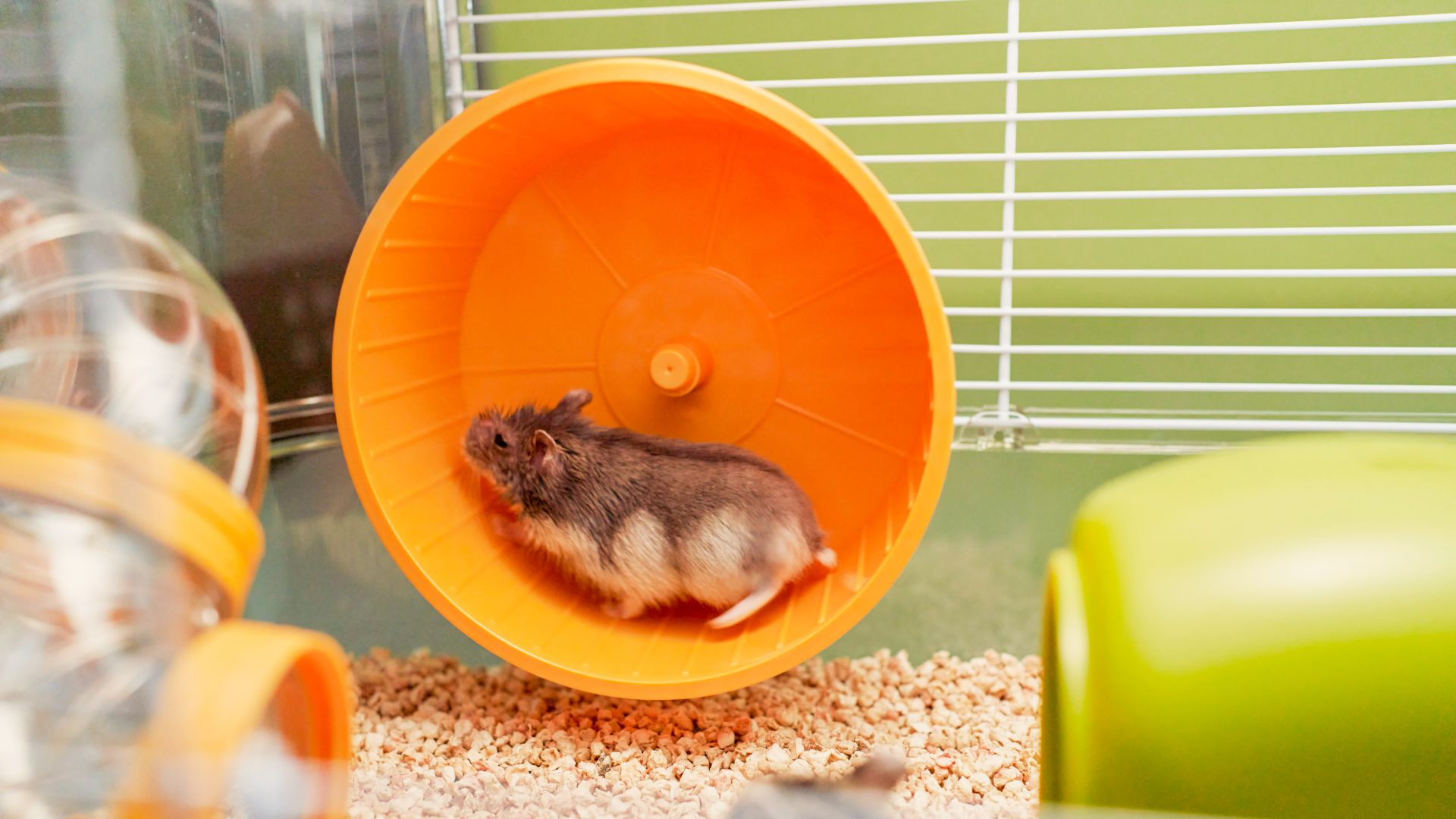
As we mentioned, you should do a daily spot clean and weekly deep clean to keep your hamster’s cage in the best shape possible. On daily spot cleans, Dr. MacMillan says, “This means removing any old pieces of fresh food and giving their bowl a wash in warm soapy water. You should also remove any areas of heavily soiled bedding.”
Every day, make sure you take out any soiled bedding and replace it with fresh, clean, and dry bedding. This will usually be a pretty easy job since hamsters tend to favor one spot for going about their business (generally in a corner). Investing in a small animal scoop to quickly remove the dirty matter is a wise idea, or alternatively, you could use disposable gloves and grab it with your hand.
You should also be cleaning any water bottles or food bowls daily ideally too, especially as this is a sure-fire place for bacteria to breed.
As for more thorough cleanings, these should be done weekly. Dr. MacMillan says “Remove all the furniture and toys from your hamster’s enclosure and wash them in warm soapy water, expecting them for wear and tear. You will then need to dispose of all the substrate and bedding into the trash and use a mild pet-safe disinfectant to clean inside the enclosure.
Once a week, it’s advisable to remove all bedding – whether it’s obviously dirty or not. Simply tip it all out, remove anything that has gotten stuck to the cage, and replace everything with clean, fresh, and dry bedding. At this point, removing objects in your hamster’s cage, such as wheels, food bowls, tubes, and so on is a good idea to make sure all the bedding is definitely removed.
Further to that, doing a deep clean once every month to six weeks will keep the cage in tip-top condition. With this, not only will you remove all the old bedding, but you will also give the cage and any associated accessories and toys a proper clean, either in a basin or with a damp cloth and cleaning agent.
Where do you put a hamster when cleaning the cage?
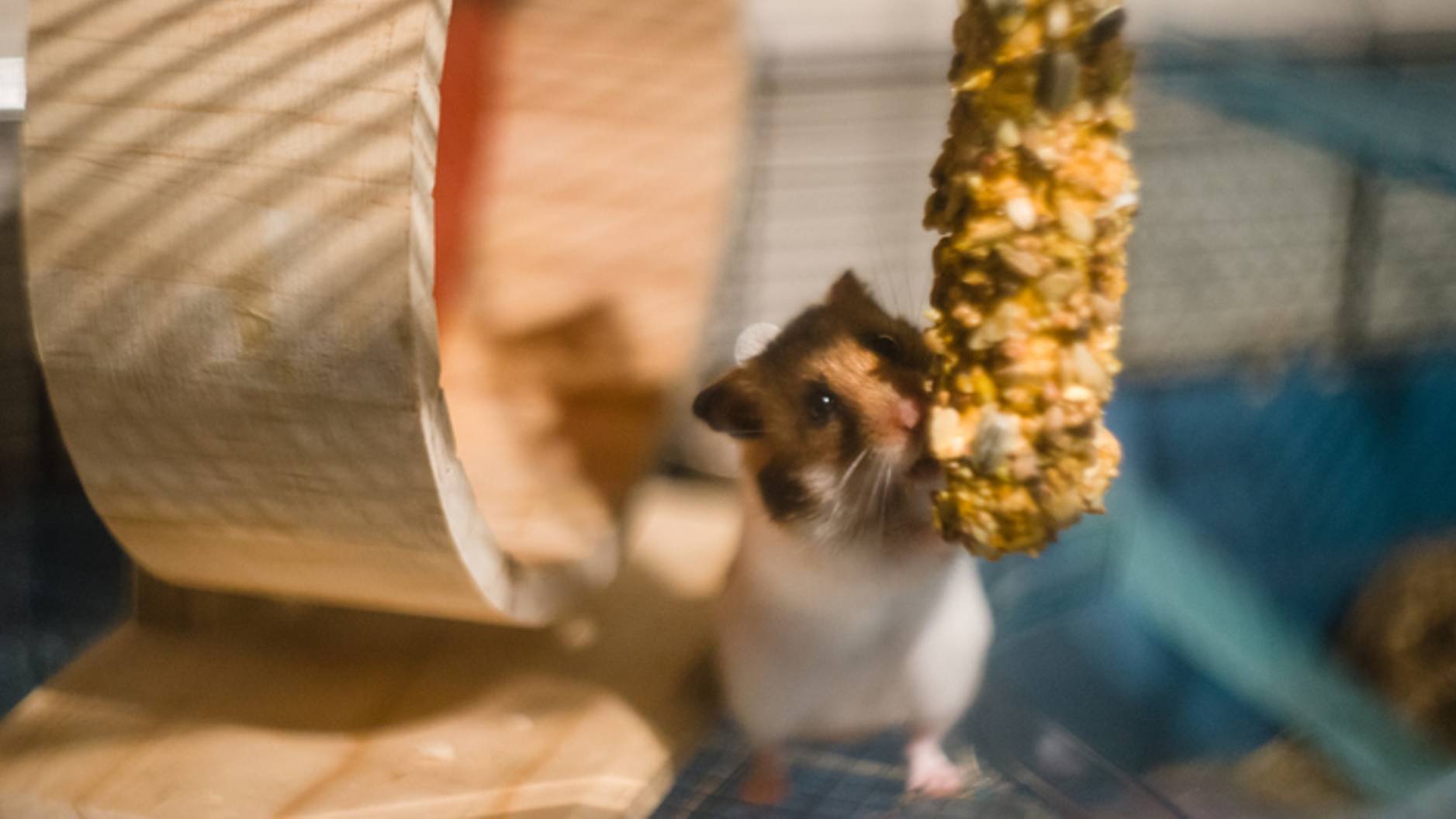
You might find that you can get away with leaving the hamster in the cage when doing the simple daily removal of soiled bedding. However, if your hamster is particularly cautious or anxious, they may not appreciate the intrusion into their home. In that case, placing them somewhere safe is a good idea. You’ll definitely want to take them out of the cage when performing the weekly or monthly clean.
A simple solution is to invest in a small portable hamster cage specifically for this purpose. Place some bedding (you can use bedding from their main cage to make them really feel at home) and a small amount of food in the small cage for them to enjoy while you’re cleaning their main home. A portable cage is useful if you ever need to take your hamster to the vet, so it’s a handy investment too.
If you don’t have such a cage, an alternative is to use a high-sided box that the hamster can’t escape from or jump out of. Something made of plastic is ideal since they are unlikely to chew through it quickly. Again, place some bedding and food inside the box to make them feel at home.
What can I use to clean my hamster’s cage?
It can be tempting to use strong cleaning solutions when you’re cleaning out anything that an animal has dirtied. However, you need to remember that lots of cleaning solutions can be potentially toxic to small animals.
The best bet is to use something mild, such as dish soap, for the weekly clean, along with lukewarm water to get rid of any stubborn stains and smells. Alternatively, you can get cleaning products that have been specifically formulated for use when cleaning small animal cages and habitats. These will give you peace of mind that they are safe for your furry little friends.
Avoid cleaning products that are particularly strong, such as bleach or anything containing ammonia.
How to clean your hamster
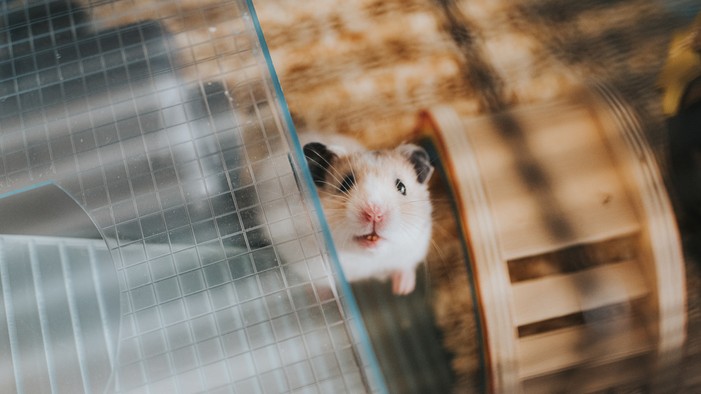
Do hamsters smell? Yes, they can! Although this article is primarily about cleaning your hamster’s habitat, you might occasionally need to clean the hamster itself.
Hamsters are generally clean animals and they do an excellent job of cleaning themselves. If they have something particularly dirty on them that they can’t seem to remove, you can step in with a piece of soft tissue or even a cotton bud. Use simple lukewarm water as this will remove most problems and will ensure you don’t introduce any problematic chemicals to your hamster.
Having a bottle of small animal shampoo at home is a wise idea in case your pet gets particularly dirty. If you do need to clean them more thoroughly, always ensure that you do it in a warm room and try to dry them as quickly as you can after the wash with a clean, dry, and warm towel. Never be tempted to use a hairdryer on your hamster.
Found this helpful? Check out how big should a hamster cage be?







